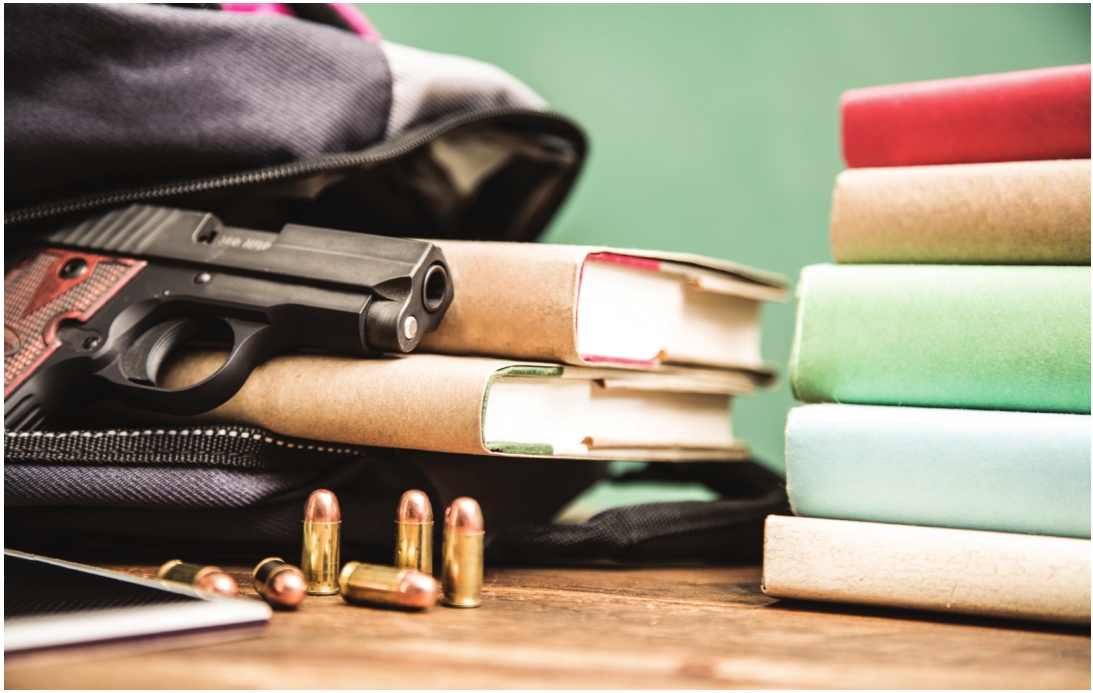
For decades, students have participated in fire and tornado drills. Many of us remember the sudden wailing of a fire alarm, then lining up and traipsing out of the building, waiting for the all clear from the fire department. Or we remember crouching in a hall, hands over our heads as practice for a tornado.
In today’s world, an unfortunate reality is that students now participate in safety drills to prepare in case of an active shooter. As of 2018, these drills are now required by law. The new law also changed the title of the drill from “law enforcement drill” to “active shooter drill,” which has created some misinformation about what really happens during the exercise.
Ben Schwarm with the Illinois Association of School Boards explains, “Schools have done safety drills for a while. Now calling it an active shooter drill does not mean a re-enactment. We don’t start a fire for a fire drill, so we don’t need to have someone running up and down a hall with a gun for a safety drill.”
Jeff Vose, Sangamon County Regional Superintendent of Schools, oversees some of the requirements. His office must collect each school’s emergency plan and help school staff complete checklists and review responsibilities of various people, from the first responders to the staff within a school. Vose’s office also collects the blueprints of all the schools within Sangamon County to file with the police departments.
Starting in the fall of 2019, an active shooter drill must occur during the first 90 days of school. The new law also specifies that these must be conducted when students are present. Prior to this, the drill could be conducted on days students were not present. However, parents have the right to request a waiver.
Randy Allen, who retired after 26 years with the Illinois State Police, now serves as the director of safety and security for the Chatham schools. He says, “We have done safety drills for a while. A friend of mine near Chicago told me that their school conducted a re-enactment, and the students freaked out. We aren’t doing that.”
Jon Filbrun, coordinator of security and safety for the Springfield school district who served 29 years with the Springfield Police Department, agrees. “We are training all teachers and staff in all the schools about expectations,” he said. He explained that any type of real-life scenario is only conducted with volunteers on a Saturday.
What happens during an active shooter drill? The building is locked down; teachers are to lock doors, turn off lights, get students away from the door or a window next to a door and have students get perfectly quiet. Both Filbrun and Allen follow similar protocol. Allen explains, “Law enforcement personnel then walk and check each door to make sure it is locked, that lights are off and that they cannot see or hear anyone.” Filbrun says, “We walk the entire building, and we want it to be ultra-quiet – almost like a ghost town.” There is a debriefing session held to review any problems or concerns and any follow-up needed.
So that students don’t panic or think there is a real shooting and start using cellphones to report a problem, parents are often told of a lockdown drill. Allen says, “We also want students to know what to do in case it might be passing time, lunch time, gym time – occasions when students are not in classrooms. So, we alert the students that sometime within the week there will be a drill. We teach the correct protocol in assemblies. Students learn that they are to get to the closest classroom or bathroom.”
Filbrun adds that it is important that there is understanding about a drill. He tells of the time that a person dropped something in a hallway and the noise was mistaken for a gunshot. “We had kids calling 911; there was no shooter.”
Making sure students and parents know that there will be drills and what happens is essential.
Cinda Ackerman Klickna taught high school English in Springfield for many years.